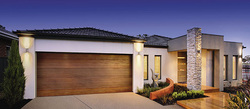
Firstly, if you aren't sure what NRAS is, I'll give you a quick run down. NRAS stands for National Rental Affordability Scheme, and is an Australian federal government program to tackle the housing affordability crisis by encouraging more private investment in affordable rental accommodation. In short, the government is offering to pay generous incentives to investors who offer to rent their property at 20% below the market rate to eligible tenants. Currently, these incentives are valued at over $9,000 per year in tax free income and are offered for a ten year period.
However, while the NRAS program aims to provide more affordable rental accommodation to Australian tenants, this does not make it social housing. Social housing is undesirable from an investment point of view for a number of reasons, partly because of investor concerns about the quality of tenants and partly because social housing is unfortunately often constructed in large estates or apartments blocks. This devalues each individual property within the development as it is located in an overall area of disadvantage.
Fortunately, NRAS homes do not have any of these characteristics. NRAS homes are required to be scattered throughout communities at a maximum density of 30%. They must also be of a similar value to nearby properties. This means that NRAS homes are essentially no different to a normal investment property of a similar value, and ensures that NRAS tenants remain integrated within the wider community.
Another difference between social housing and NRAS affordable housing is the tenant eligibility requirements. While social housing is available to only the most marginalised members of our communities, NRAS has very generous eligibility criteria. NRAS was designed to relieve rental stress on ordinary, low to moderate income working families. In fact, the income eligibility criteria are so generous that the average rental household is eligible for NRAS. The Australian government estimates that 1.5 million households across Australia are eligible to participate in NRAS.
Because NRAS properties are rented at 20% below the market rate, they will always be very attractive to tenants, and because so many households are eligible for participation in NRAS, it can be expected that there will always be a lot of competition for these properties. This means that as an NRAS landlord, you can be very discerning in picking tenants.
Additionally, because there is no essential difference between and NRAS property and its neighbouring properties, you will still have a quality asset at the end of the ten year program, unlike social housing which devalues rapidly. All in all, NRAS affordable housing is a very different class of asset to social housing, and one that offers a range of appealing characteristics to the discerning property investor.
 RSS Feed
RSS Feed